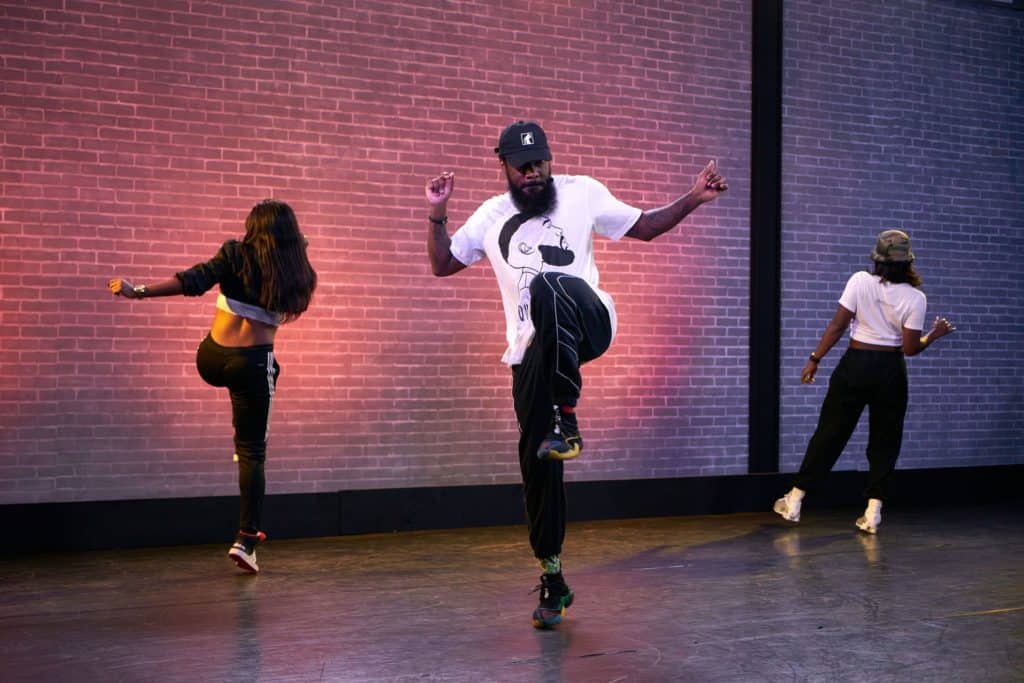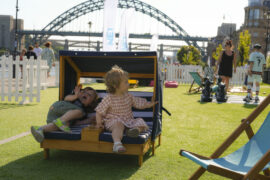Discover the Beat: Embracing Hip Hop Dance for Kids
Hello wonderful parents! Are you looking to introduce your child to the energetic and dynamic world of hip hop dance? Whether your little one has shown an interest in breaking out some fresh moves or you’re looking for a fun, physically active hobby for them, hip hop dance could be the perfect fit!
Forget the myth that hip hop is just for teens and adults. Children of all ages can dive into this creative art form that encourages self-expression, boosts confidence, and promotes physical health. So, let’s groove our way through everything you need to know about the hip hop dance genre and how it can brighten up your child’s routine!
What is Hip Hop Dance?
Hip hop dance is a vibrant form of street dance that originated in the 1970s in the Bronx, New York. It has since exploded into a global phenomenon, capturing the hearts and imagination of youth everywhere. Hip hop encompasses a variety of styles, including breaking, locking, and popping, each with their own unique flair and history.
Today, hip hop dance not only refers to these original styles but also to the choreographed routines seen in music videos and dance studios. It’s characterized by its free-form nature, improvisation, and being in tune with the rhythm and beats of hip hop music.
Benefits of Hip Hop Dance for Kids
- Physical Fitness: Hip hop is a high-energy dance style that will have your children moving and grooving their way to improved cardiovascular health, flexibility, and strength.
- Cognitive Development: Learning and memorizing routines enhances memory, concentration, and cognitive skills.
- Social Skills: Participating in hip hop classes can help kids make new friends, learn teamwork, and develop social confidence.
- Creative Expression: This genre of dance is all about personal expression and allows kids to develop a sense of identity and freedom of expression through movement.
Understanding the Styles of Hip Hop Dance
Before you sign your child up for a hip hop dance class, let’s break down some of the main styles you’re likely to encounter:
- Breaking (or B-boying/B-girling): Originally a street dance, breaking is known for its athletic and acrobatic elements, like freezes and power moves. It’s often performed in a battle setting, highlighting the competitive spirit of hip hop culture.
- Locking: This style features distinct pauses or “locks” in movement, followed by rapid-fire movements. Locking is playful and is usually danced to funk music.
- Popping: As the name suggests, popping involves quickly contracting and relaxing muscles to create a jerking effect, or a “pop.” It’s often performed with robotic movements and miming.
- Choreography-Based Dance: Many hip hop dance classes for kids will focus on learning routines choreographed to popular hip hop music. This style is great for beginners to learn rhythm and coordination.
Choosing the Right Hip Hop Dance Class for Your Child
With so many styles and classes available, choosing the right one for your child may seem daunting. Here are some tips to help you navigate the options:
- Look for a reputable dance studio that offers classes specifically for kids. This will ensure the instruction is age-appropriate and the environment is child-friendly.
- Consider your child’s personality and preferences. Some might thrive in the competitive atmosphere of a breaking class, while others might prefer the structure of a choreography-based class.
- Check if the studio has a trial class option. This allows your child to experience the dance style and the teaching environment before committing to a full session.
Embracing the world of hip hop can be an incredibly rewarding experience for your child. Remember, the goal is to have fun and enjoy the beat, so encourage your little dancer to try different styles and find their groove. Stay tuned as we continue to explore the lively realm of hip hop dance, where creative expression and physical activity harmoniously meet. Let the rhythm fuel their journey!

5 Things Parents Should Know When Preparing for Hip Hop Dance
As a parent entering the fun-filled world of hip hop with your child, there are a few key things to keep in mind to ensure a rewarding and enjoyable experience:
- Outfitting for the Beat: Hip hop dance is all about movement, so it’s important to dress for success. Opt for comfortable, loose-fitting clothing that allows for a full range of motion and sneakers with good support. Most dance studios will provide guidance on any specific dress codes.
- Health is Hip: Get your child ready for the high energy of hip hop by encouraging a healthy lifestyle. A balanced diet and proper hydration will support their active participation in dance classes.
- Practice Makes Perfect: While instructors will teach the necessary skills in class, practicing at home can help your child improve faster and retain routines. Keep it fun by having informal dance parties and encouraging your child to show you what they’ve learned!
- Stay Positive and Supportive: Confidence is key in dance, and your support can go a long way. Celebrate your child’s progress and encourage them to push through challenges. Remember that everyone learns at their own pace.
- Understanding Hip Hop Culture: Hip hop is much more than a dance genre; it’s a culture. Sharing the history and social aspects of hip hop with your child can enrich their experience and appreciation for the dance style they’re learning.
Navigating Performances and Recitals
As your child becomes more immersed in hip hop dance, they may have opportunities to participate in performances or recitals. This can be an exciting and affirming experience! Ensure they are prepared by attending all rehearsals, understanding the requirements for costumes and makeup, and arriving on time for performances. Most of all, be their biggest cheerleader—your enthusiasm will boost their confidence on stage.
Fostering a Safe Dance Environment
Safety in any physical activity is paramount, and dance is no exception. Check that the dance studio you choose has a proper flooring system designed to absorb impact and prevent injury. Instructors should be trained to teach proper technique to avoid strain or harm. Reinforce the importance of warming up and cooling down before and after classes to keep those young muscles limber.
By understanding these foundational aspects of hip hop dance and its culture, you’re setting the stage for your child’s success and joy in dancing. With knowledge, preparation, and a heart full of beats, your child will be well on their way to becoming a confident, expressive, and spirited hip hop dancer. Keep the excitement alive, encourage their passion, and watch as the wonderful world of hip hop dance unfolds before their very eyes!
Connecting with the Hip Hop Community
Beyond classes and studio time, engaging with the wider hip hop community can provide a sense of belonging and additional inspiration for your child. Many cities host hip hop events, battles, and workshops where dancers can watch, learn, and immerse themselves in the vibrant atmosphere. Support local hip hop events and consider joining online communities or forums where insights and experiences are shared.
Remember, hip hop is a continuously evolving art form celebrated across the globe. Participating in this community not only enhances dance skills but also builds lifelong connections and a deeper appreciation for this powerful cultural expression. Let’s get those hip hop dreams in motion and watch as your kids pop, lock, and break their way into a world where creativity knows no bounds!
See more great Things to Do with Kids in New Zealand here. For more information see here
Disclaimer
The articles available via our website provide general information only and we strongly urge readers to exercise caution and conduct their own thorough research and fact-checking. The information presented should not be taken as absolute truth, and, to the maximum extent permitted by law, we will not be held liable for any inaccuracies or errors in the content. It is essential for individuals to independently verify and validate the information before making any decisions or taking any actions based on the articles.




